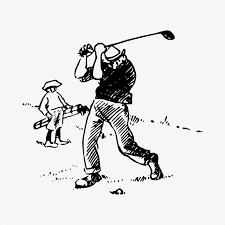
Mastering Your Golf Swing: Understanding the Difference Between a Slice and a Hook
When it comes to playing golf, one of the most frustrating aspects for many players is the inconsistent ball flight that results from a slice or a hook. These shots can send the golf ball far off course, leading to a higher score and a frustrating round. To improve your accuracy and consistency on the golf course, it's important to understand the key differences between a slice and a hook and learn how to correct these common swing faults.
A slice is a shot that curves drastically to the right (for right-handed golfers) or to the left (for left-handed golfers). It typically starts relatively straight but veers off course during its flight. On the other hand, a hook is a shot that curves excessively to the left (for right-handed golfers) or to the right (for left-handed golfers). It begins on one side of the target and curves sharply in the opposite direction.
The causes of a slice and a hook are often linked to the golfer's swing mechanics. Let's take a closer look at each of these swing faults and the potential fixes:
1. Slice:
To correct a slice, try the following tips:
- Check your grip:
Make sure your grip is neutral and not too weak (hands turned too far to the left) or too strong (hands turned too far to the right). A neutral grip helps square the clubface at impact.
- Focus on your clubface position:
Practice swinging with your clubface square to the target at impact. This may require some adjustments to your hand and wrist position throughout the swing.
- Work on an inside-out swing path: Practice swinging the club on a path that starts from inside the target line and follows through to the target. This helps promote a straighter ball flight and minimizes side spin.
2. Hook:
- The clubface is closed at impact:
Unlike a slice, a hook is caused by a closed clubface at impact. This means that the face of the club is pointing left (for right-handed golfers) or right (for left-handed golfers) when it contacts the ball.
- An in-to-out swing path:
A hook is often the result of an in-to-out swing path, where the club approaches the ball from inside the target line and moves outward through impact. This causes the ball to spin left (for right-handed golfers) or right (for left-handed golfers).
To correct a hook, try the following tips:
- Adjust your grip:
Check your grip and ensure it is not too strong, as this can promote a closed clubface. Experiment with slightly weakening your grip to help square the face at impact.
- Focus on your clubface position:
Practice swinging with the clubface square to the target at impact. Pay attention to your hand and wrist position to prevent the face from closing too much.
- Modify your swing path:
Work on swinging on a path that starts outside the target line and moves inward through impact. This helps to reduce the amount of side spin on the ball, promoting a straighter flight.
Improving your golf swing takes time and practice. Consider working with a golf professional who can provide personalized instruction and feedback on your swing mechanics.
Additionally, filming your swings and reviewing them can help identify any flaws and guide you towards the necessary adjustments.
In conclusion, understanding the differences between a slice and a hook is crucial for any golfer looking to improve their accuracy and consistency on the course.
By analyzing your swing mechanics, making the necessary adjustments to your grip, clubface position, and swing path, you can overcome these common swing faults and master your golf swing. So get out on the practice range, hone your skills, and watch your ball flight become more accurate and reliable
